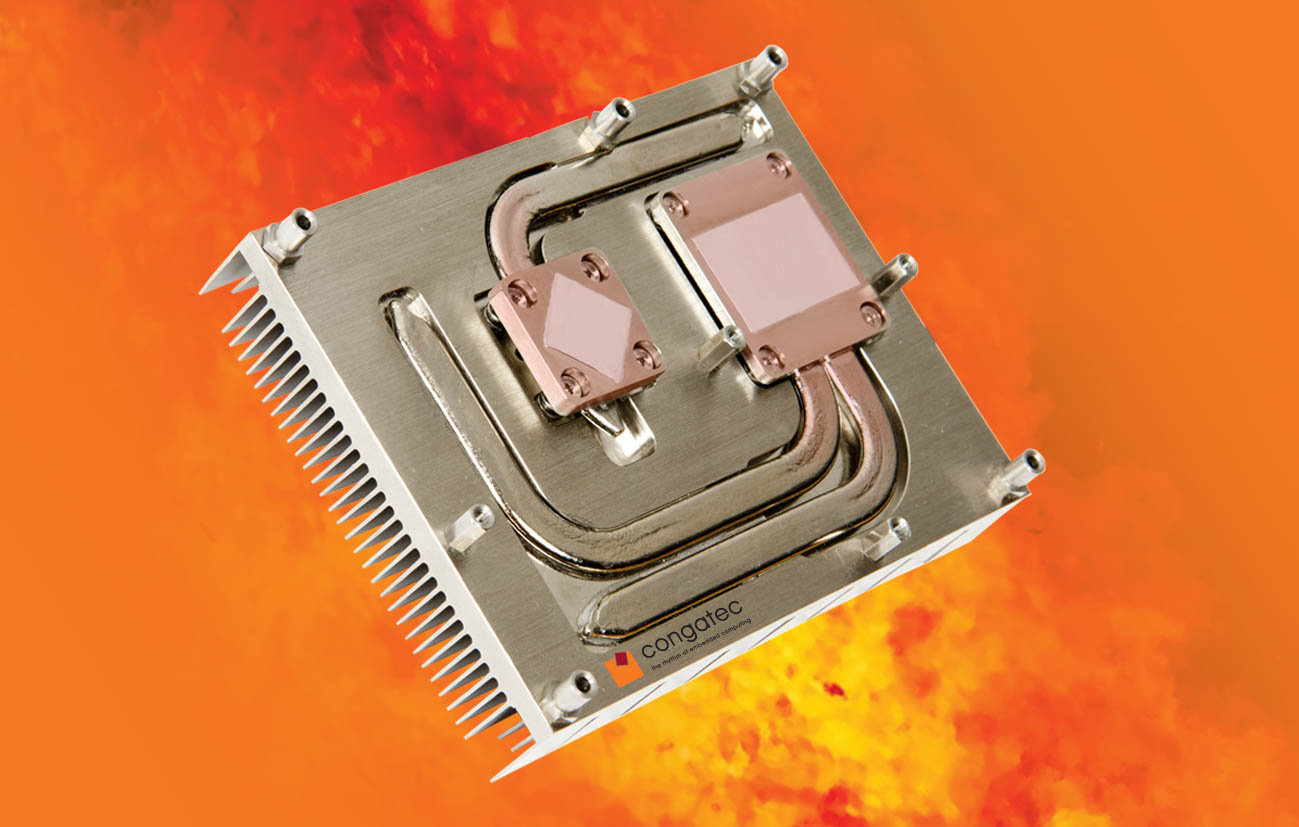Congatec shows off acetone-based heat pipe cooling solution for extremely cold environments

Congatec, a manufacturer that specializes in embedded and edge computing designs, unveiled a new acetone-based heat pipe cooling solution at Embedded World 2025. Unlike traditional setups, acetone's properties shine in sub-zero or arctic environments where other liquids such as water would freeze and potentially damage the cooling solution, the module, or the entire system.
Heat pipes, like the one you'd normally find on an air cooler, employ the principle of evaporation and condensation for effective transfer of heat. Despite their name, air coolers employ heat pipes featuring a "working fluid" to absorb and dissipate heat from your device. Mainstream heat pipes typically use water as the working fluid, because of its high latent heat of vaporization (2,260 J/g).
Heat from your device is absorbed by the fluid, which then vaporizes and moves to the cooler end of the pipe, which is typically kept under a fan. There, the vapors release their heat by condensing back into liquid form. This heat dissipates into the surroundings.
In arctic environments, water simply isn't a viable working fluid as it freezes at 0 degrees Celsius. Contrary to popular belief, at sub-zero temperatures you cannot leave these modules out in the open as they'd become extremely susceptible to condensation. Controlled cooling using acetone-filled heat pipes is an ideal workaround due to its exceptionally low freezing point. Congatec has specified an operating temperature range of -40 degrees Celsius to 85 degrees Celsius for its acetone cooling solutions.
The company explained that developers can use its application-ready COMs with acetone cooling instead of expensive and complex custom system designs. This new thermal solution is ideal for embedded systems in extreme environments, including Arctic/Antarctic research, high-altitude operations, cold stores, etc. Congatec reports that this solution is effective with its COMe, COM-HPC, COM-HPC mini offerings, and will also be available in the form of a heat pipe adapter for tailored applications.
That said, don't expect acetone-based heat pipes to go mainstream anytime soon. Water can dissipate significantly more heat than acetone can in normal environments, and is also abundant and cheap for manufacturers. While Congatec's website showcases their full range of cooling solutions, the acetone heat pipe system is currently not listed.
Get Tom's Hardware's best news and in-depth reviews, straight to your inbox.

Hassam Nasir is a die-hard hardware enthusiast with years of experience as a tech editor and writer, focusing on detailed CPU comparisons and general hardware news. When he’s not working, you’ll find him bending tubes for his ever-evolving custom water-loop gaming rig or benchmarking the latest CPUs and GPUs just for fun.
-
anoldnewb "water is also abundant and cheap for manufacturers."Reply
Cost or abundance of acetone isn't an issue. For a 50 gallon drum quantity, acetone costs $0.07 per 20 ml. Its flammability will require certain safety precautions during manufacturing. that would add cost. -
usertests Reply
Reminding us that water is "abundant and cheap for manufacturers" is pretty funny though.anoldnewb said:"water is also abundant and cheap for manufacturers."
Cost or abundance of acetone isn't an issue. For a 50 gallon drum quantity, acetone costs $0.07 per 20 ml. Its flammability will require certain safety precautions during manufacturing. that would add cost.
I think I'll spill water all over myself (shower). -
Notton That's an interesting product.Reply
Some questions.
Why acetone, and not something like ethanol or isopropanol?
Does the heatpipe require a different wick/mesh/foam compared to a traditional water based one?